From Pen to Paint: Unleashing Creativity Across Mediums
Why Blend Writing and Visual Art?
WRITINGARTCREATIVITY
Kat Sanders
4/18/202412 min read

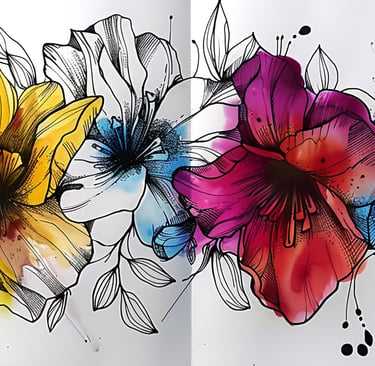
Why Blend Writing and Visual Art?
In the vast realm of creativity, where words dance on pages and colors burst on canvases, there exists a beautiful synergy between writing and visual art. But why blend these mediums? What magic lies in the fusion of pen and paint?
History whispers tales of interconnectedness between literature and art, their symbiotic relationship weaving narratives that transcend time. From illuminated manuscripts to Renaissance masterpieces, the marriage of text and imagery has captivated hearts and minds for centuries.
Yet, it's not just the echoes of the past that beckon us to blend writing and visual art. It's the unique benefits that arise when these two worlds collide. Picture this: descriptive prose that paints vivid scenes in the reader's mind, seamlessly transitioning into brushstrokes that bring those scenes to life on canvas. It's a symphony of creativity, where words and images harmonize to evoke emotions, spark imagination, and transcend boundaries.
But don't just take my word for it. Dive into the stories of artists who have ventured into this creative frontier, pioneering new paths where writing and visual art converge. Their journeys are testaments to the transformative power of blending mediums, inspiring us to embark on our own explorations.


Starting with Words: The Power of Creative Writing
Let's begin with words – the building blocks of imagination. Creative writing isn't just about crafting stories; it's about unleashing worlds waiting to be explored. Through the art of descriptive writing, we learn to wield words like paintbrushes, creating landscapes, characters, and emotions that leap off the page.
Imagine a sun-drenched meadow, where golden rays dance on emerald grass, and wildflowers sway in a gentle breeze. Can you see it? That's the power of descriptive writing – it transforms abstract ideas into tangible realities, igniting the imagination and laying the foundation for visual artistry.
But descriptive writing isn't just a tool for painters; it's a playground for all creative minds. Through exercises and prompts, we can hone our ability to visualize through text, sharpening our skills as both writers and visual artists. So, grab your pen and let your imagination soar – the canvas of creativity awaits.


Visual Art as a Form of Storytelling
Visual art is more than just pretty pictures; it's a language of its own, with the power to convey stories, emotions, and ideas without a single word. From the strokes of a brush to the hues of a palette, every element tells a tale, inviting viewers to embark on a journey of discovery.
But how do we harness the narrative potential of visual art? It begins with understanding the language of imagery – composition, color theory, and symbolism. By mastering these tools, we can craft narratives that resonate deeply with our audience, evoking emotions and sparking conversations.
Through case studies and examples, we uncover the myriad ways artists tell stories through their paintings, from whimsical fantasies to poignant reflections on the human condition. Their work reminds us that visual art is not just about what we see, but what we feel – a universal language that transcends barriers and speaks to the soul.

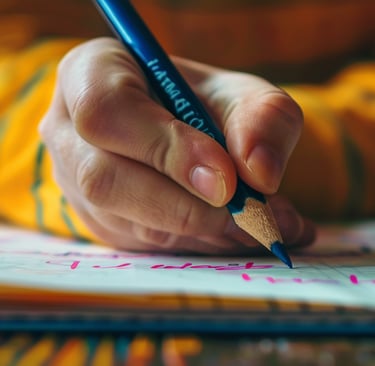
Bridging the Gap: Practical Ways to Merge Writing and Art
Now that we've explored the realms of creative writing and visual art, it's time to bring them together in a harmonious union. But how do we bridge the gap between these two mediums? Fear not, for the journey is filled with endless possibilities and boundless creativity.
Start by experimenting with mixed media techniques, combining words and images in unexpected ways. Perhaps a poem finds its home within a painting, or a story unfolds across a series of illustrations. The only limit is your imagination.
But inspiration doesn't always strike on command. That's why it's essential to cultivate a creative environment, where ideas flow freely and inspiration is always within reach. Surround yourself with sources of inspiration – books, nature, music – and let your imagination run wild.
And remember, the road to artistic fusion is not without its challenges. But with perseverance and a willingness to learn from mistakes, you'll discover that every obstacle is an opportunity in disguise. So, embrace the unknown, and let your creativity soar.

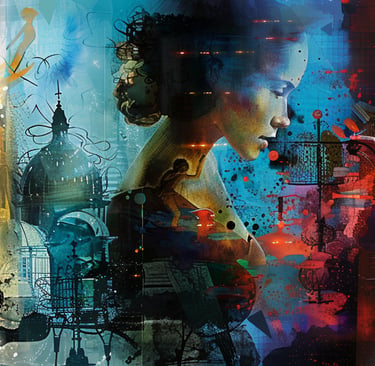
Challenges and Solutions in Combining Mediums
As with any creative endeavor, merging writing and visual art comes with its fair share of challenges. From the daunting blank canvas to the fear of creative block, the journey can sometimes feel like an uphill battle. But fear not, for every challenge has a solution waiting to be discovered.
One common obstacle is the struggle to find the right balance between words and images. How much is too much? How little is too little? The key is to let the narrative guide you – trust your instincts and let the story unfold organically.
Another challenge is the fear of judgment – what if my work isn't good enough? What if no one understands my vision? Remember, art is subjective, and not everyone will resonate with your work – and that's okay. Focus on expressing yourself authentically, and the right audience will find you.
And finally, don't be afraid to make mistakes. Some of the greatest breakthroughs in creativity come from taking risks and embracing failure. So, dare to be bold, dare to be different, and most importantly, dare to be yourself.
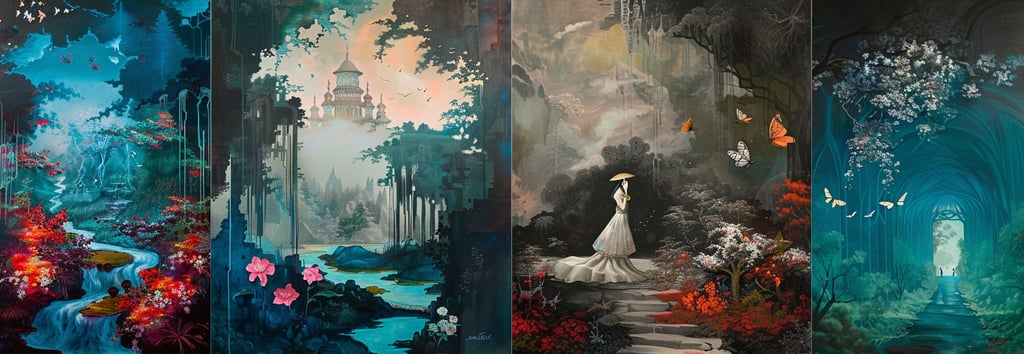

Showcasing Your Work: From Personal Fulfillment to Public Recognition
As your journey in merging writing and visual art unfolds, you'll undoubtedly create works that resonate deeply with your soul. But what do you do with these creations? How do you share them with the world?
Start by documenting your work – whether it's through a physical portfolio or an online gallery. Capture the essence of each piece, along with the stories and inspirations behind them. Not only will this help you track your progress, but it will also provide valuable context for your audience.
Next, consider sharing your work with others – whether it's through social media, exhibitions, or collaborations. Building an audience for your creations takes time and effort, but the connections you forge along the way are priceless. So, don't be afraid to put yourself out there and let your light shine.
And remember, success is not measured by fame or fortune, but by the impact you have on others. So, whether your work touches one heart or a million, know that your voice matters, and your story deserves to be heard.


Exploring Collaborative Opportunities: Joining Forces for Creative Excellence
One of the most exciting aspects of merging writing and visual art is the opportunity for collaboration. Imagine teaming up with fellow creatives to combine your unique skills and perspectives, creating works that are greater than the sum of their parts.
Collaborative projects can take many forms – from co-authoring a book with an illustrator to participating in group exhibitions that showcase the diverse talents of multiple artists. By working together, you not only expand your creative horizons but also forge meaningful connections with like-minded individuals.
But collaboration isn't just about sharing ideas; it's about mutual respect, communication, and compromise. Each collaborator brings their own strengths and vision to the table, enriching the creative process and pushing the boundaries of what's possible.
So, reach out to your fellow creatives, and embark on collaborative journeys that inspire, challenge, and delight. Together, you can create something truly extraordinary.

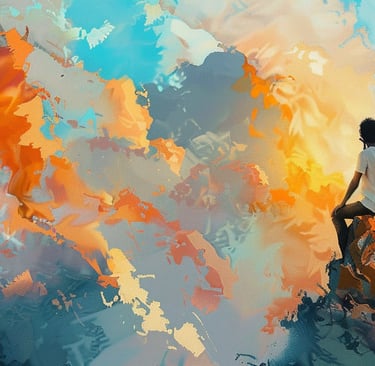
Finding Inspiration in Unexpected Places: Exploring Cross-Medium Influences
Creativity knows no bounds – it can be found in the unlikeliest of places, waiting to be discovered and harnessed in new and exciting ways. One of the joys of merging writing and visual art is the opportunity to draw inspiration from a diverse array of sources, transcending traditional boundaries and conventions.
Take, for example, the world of film – a medium that combines storytelling, visual imagery, and sound to create immersive experiences. By studying the techniques and aesthetics of cinema, writers and visual artists can glean valuable insights into narrative structure, character development, and visual storytelling.
Similarly, music can be a rich source of inspiration for creatives of all stripes. From the evocative lyrics of a song to the emotional resonance of a melody, music has the power to ignite the imagination and fuel the creative process. Whether you're writing a poem or painting a portrait, let the rhythms and melodies of music guide your hand and inspire your work.
And let's not forget the power of nature – the ultimate muse for artists and writers alike. Whether you're strolling through a sun-dappled forest or gazing up at the stars, nature has a way of sparking creativity and reminding us of the beauty and wonder of the world around us.
So, open your eyes, open your ears, and open your heart to the myriad sources of inspiration that surround you. You never know where your next great idea might come from.
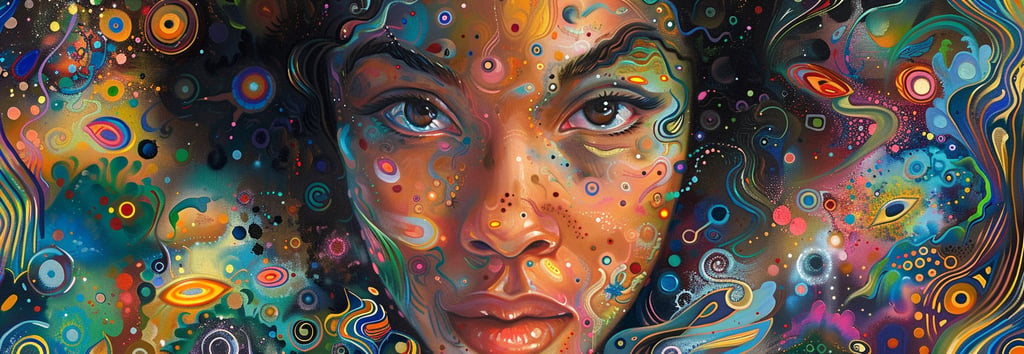

Embracing Diversity and Inclusion: Celebrating the Voices of All Creators
In the world of creativity, diversity is not just a buzzword – it's a fundamental principle that enriches our collective experience and expands our understanding of the human condition. As we explore the intersection of writing and visual art, it's essential to celebrate the voices and perspectives of all creators, regardless of background, identity, or experience.
Inclusivity begins with representation – ensuring that artists and writers from all walks of life are given the opportunity to share their stories and showcase their talents. Whether it's through exhibitions, publications, or online platforms, we must strive to create spaces where everyone feels seen, heard, and valued.
But inclusivity is not just about visibility; it's about fostering a culture of respect, empathy, and collaboration. It's about listening to diverse voices, amplifying marginalized perspectives, and working together to build a more equitable and inclusive creative community.
So, let us embrace diversity and inclusion in all its forms – in our art, in our writing, and in our lives. Let us celebrate the rich tapestry of human experience and continue to push the boundaries of creativity together.


Exploring New Frontiers: Pushing the Boundaries of Creative Expression
As we continue our journey into the realms of writing and visual art, let us not be afraid to venture into uncharted territory. Creativity thrives on experimentation and innovation, and it's often when we push the boundaries of what's possible that we make our most significant discoveries.
Consider, for example, the emerging field of augmented reality (AR) art – a medium that blends digital imagery with the physical world, creating immersive experiences that defy traditional categorization. By combining elements of writing, visual art, and technology, AR artists are breaking new ground and challenging our perceptions of art and storytelling.
Similarly, the rise of interactive storytelling platforms like Twine and ChoiceScript has opened up exciting possibilities for writers to create dynamic, choose-your-own-adventure narratives that blur the lines between text and image. These platforms empower readers to become active participants in the storytelling process, shaping the outcome of the narrative through their choices and actions.
And let's not forget the power of multimedia installations, where writing and visual art converge in immersive environments that engage the senses and provoke thought. From interactive art exhibitions to multimedia performances, these installations invite audiences to step into the world of the artist and experience their vision in new and unexpected ways.
So, as we look to the future of creative expression, let us embrace the unknown and embrace the possibilities that lie ahead. Whether we're experimenting with new technologies, exploring unconventional mediums, or challenging established norms, let us dare to dream big and push the boundaries of what's possible.
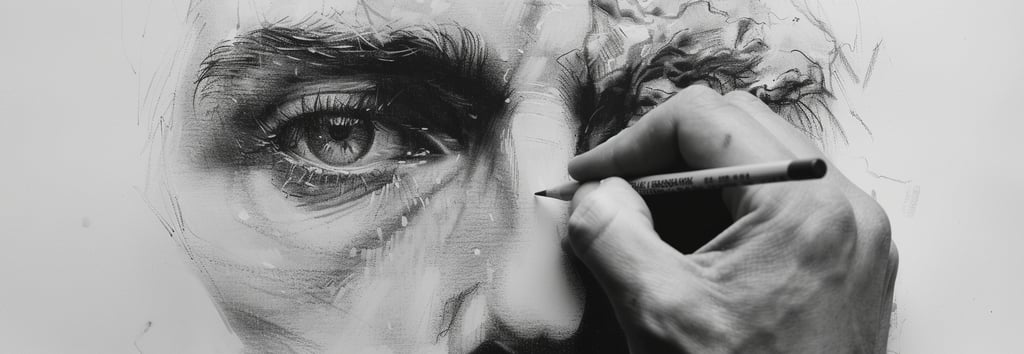

Nurturing Your Creative Spirit: Cultivating a Sustainable Practice
Creativity is not just a spark of inspiration – it's a flame that must be nurtured and tended to with care. As we navigate the highs and lows of the creative process, it's essential to cultivate habits and practices that support our artistic endeavors and sustain our creative spirit.
Start by carving out dedicated time and space for your creative pursuits. Whether it's a few minutes each day or a longer block of time each week, prioritize your creative practice and make it a non-negotiable part of your routine. Create a sacred space where you can retreat from the world and immerse yourself in your art – whether it's a cozy corner of your home or a tranquil outdoor setting.
But creativity is not just about solitary reflection – it's also about community and connection. Surround yourself with fellow creatives who inspire, support, and challenge you to grow. Join writing groups, attend art classes, or participate in online forums where you can share your work, receive feedback, and collaborate with others.
And don't forget to nourish your mind, body, and soul. Take breaks when you need them, engage in activities that bring you joy and replenish your energy, and above all, be kind to yourself. The creative journey is a marathon, not a sprint, and it's essential to pace yourself and practice self-care along the way.
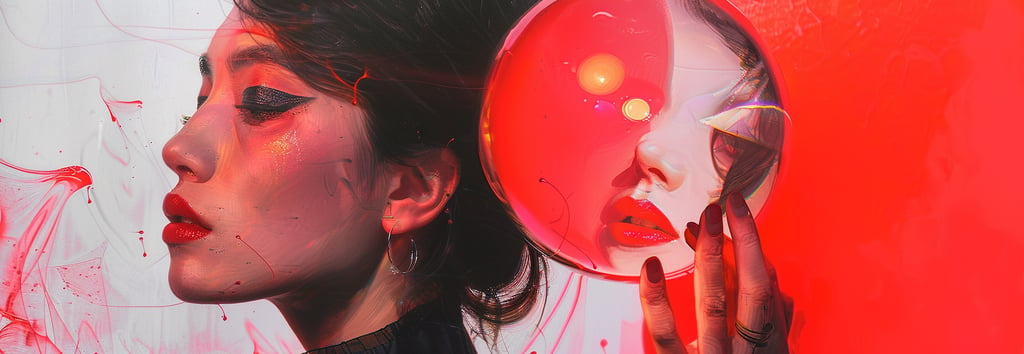

Embracing the Evolution: Adapting to Changing Trends and Technologies
As we journey further into the digital age, the landscape of creativity continues to evolve at a rapid pace. New technologies, platforms, and trends emerge with dizzying frequency, challenging artists and writers to adapt and innovate in response.
One such trend is the rise of social media as a powerful tool for sharing and promoting creative work. Platforms like Instagram, TikTok, and Pinterest provide artists and writers with unprecedented access to global audiences, allowing them to showcase their work, connect with fans, and build communities around their creative endeavors.
But with great power comes great responsibility, and it's essential to approach social media mindfully and authentically. Instead of chasing likes and followers, focus on building genuine connections with your audience, sharing your process, and telling your story in a way that resonates with others.
Another trend to watch is the growing demand for immersive experiences that blur the boundaries between the physical and digital worlds. From virtual reality (VR) exhibitions to interactive storytelling apps, these experiences offer new opportunities for artists and writers to engage their audience in innovative and exciting ways.
But as we embrace these new technologies and trends, it's essential not to lose sight of the fundamentals of creativity – storytelling, expression, and connection. Whether we're writing a poem or painting a portrait, the heart of our work remains the same, and it's this authenticity and passion that will continue to resonate with audiences, no matter how the medium evolves.
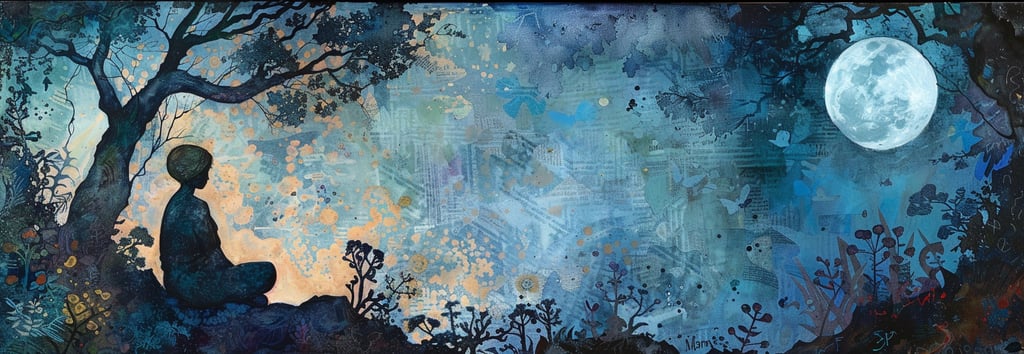

Cultivating Resilience: Navigating the Challenges of the Creative Journey
The path of the artist is not always smooth sailing – it's often fraught with challenges, setbacks, and moments of self-doubt. But it's how we respond to these challenges that defines us as creators and ultimately determines our success.
One of the most common challenges artists and writers face is creative block – that dreaded feeling of being stuck, uninspired, and unable to move forward. But instead of viewing creative block as a roadblock, try seeing it as an opportunity for growth and exploration. Take a break, engage in other creative activities, or simply allow yourself to rest and recharge. Often, it's during these moments of pause that our most significant breakthroughs occur.
Another challenge is the pressure to be perfect – to create flawless works of art that meet impossibly high standards. But perfection is an illusion, and the pursuit of perfection can stifle creativity and lead to burnout. Instead, embrace imperfection as a natural part of the creative process, and give yourself permission to make mistakes, take risks, and learn from failure.
And finally, remember that rejection is not a reflection of your worth as an artist or writer. Every rejection is an opportunity to learn and grow, to refine your craft, and to become better at what you do. So, don't let fear of rejection hold you back – embrace it as a necessary step on the path to success.


The Infinite Possibilities of Artistic Fusion
From the power of descriptive writing to the narrative potential of visual art, we've witnessed the transformative magic that happens when words and images collide. But our exploration doesn't end here – it's just the beginning. As you embark on your own creative journey, remember that the possibilities are endless, and the only limit is your imagination. So, dare to dream, dare to create, and dare to be extraordinary.
Are you ready to unleash your creativity across mediums? The pen is in your hand, the paint is on your palette – what masterpiece will you create today?
